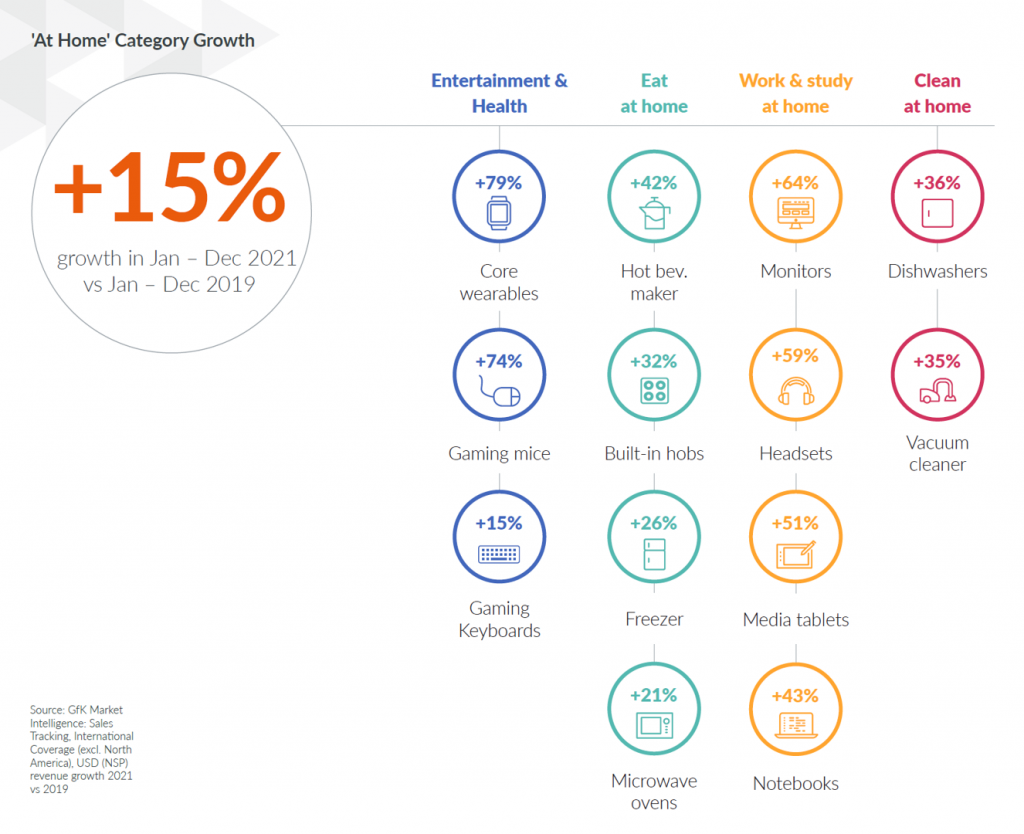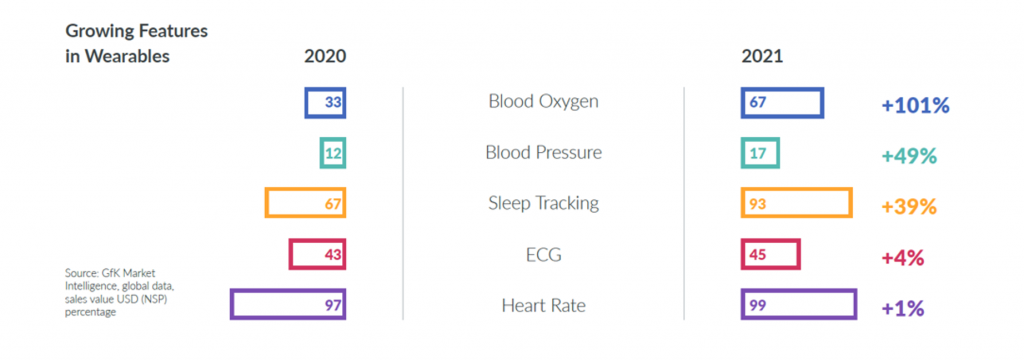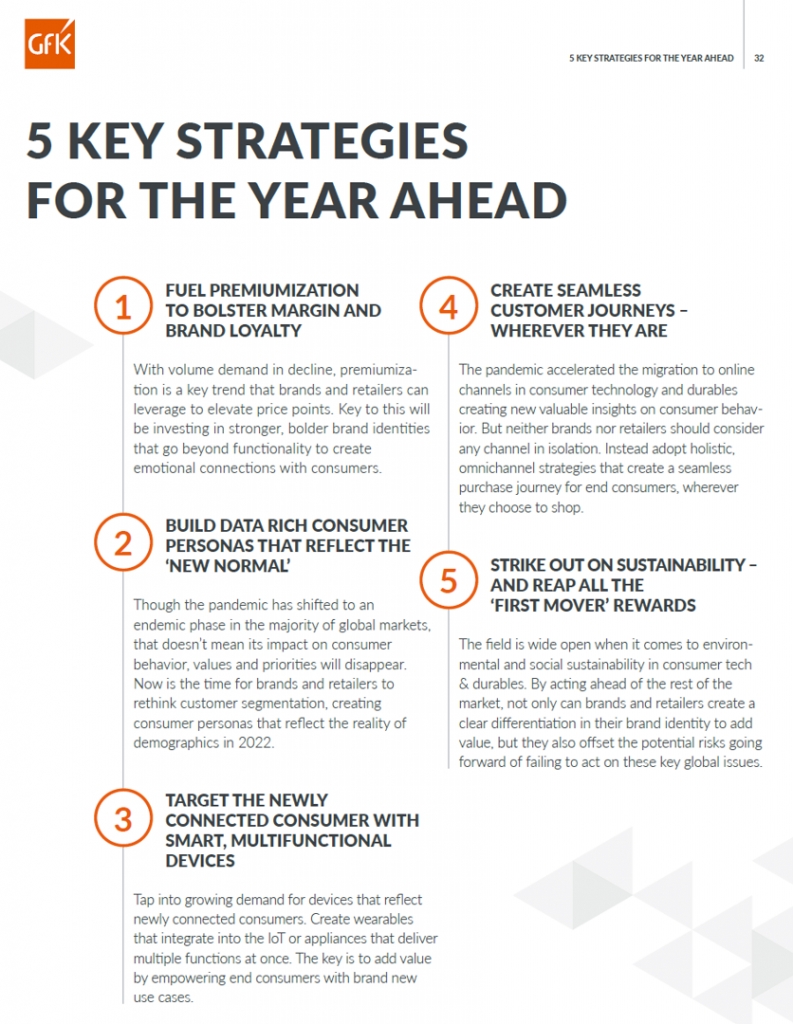[ad_1]
Even though inflation and money worry is depressing client need for lots of buys the “legacy of COVID-19” is getting lost-lasting impacts on how people see their houses — specifically as internet sites for wellness and wellness.

GfK highlights the developing desire in wellbeing and gadget need in The Condition of Shopper Engineering and Durables 2002 insights from GfK.
In 2021, peoples’ spending on know-how and tough products (like dwelling appliances) grew by 15%, with various types viewing spectacularly significant growth charges — most notably leisure and health and fitness, a classification in which main wearables purchases were being up by 79%. Core wearables contain sensible watches, which the recent market place forecast from the Shopper Technology Association expected would increase in gross sales in 2022.

A substantial driver of consumers’ wearable spending demand is immediately relevant to connected/wearable wellbeing and to multifunctionality, GfK noted in the investigation.
Two-thirds of shoppers take into consideration remaining in fantastic psychological and actual physical condition “extremely important.” “This has created sturdy demand for tech-enabled products that equip customers with feedback on a raft of well being-related metrics, from high-quality of snooze and number of steps, to blood sugar concentrations and calories burned,” the GfK report noticed.

In 2021, the major growth application for purchaser health wearable tech was for blood oxygen, increasing by around 100% in income worth, with blood stress expanding by 49%, and snooze tracking by 39%.
GfK notes that there is “a good deal of place to grow” just before each health citizen’s smartphone is related to a intelligent check out or physical fitness tracker (like a Fitbit product). GfK seeks what it conditions “secure 1st mover advantage” for devices that certainly create worth in consumers’ each day lives. To achieve that, the gadgets will need to be properly-developed to be intuitive and obtainable.

Health Populi’s Very hot Points: “Brands need to take into consideration how they are fitting into a consumer’s daily life,” Madalina Carstea, Head of International Gross sales, Brand name and Marketing Intelligence at GfK advisable in the report. “This indicates finish integration of tech, life-style, habits and solutions…..to technique all this in a extra holistic way.”
Carstea’s tips comports with the 5 vital methods that GfK phone calls out for the following 12 months:
- To gasoline “premiumization” that permits greater cost factors that shoppers would be eager to shell out for the reason that goods provide equally function and emotional connections
- To be knowledgeable by “data-loaded customer personae” that reflect the actuality of peoples’ publish-COVID demographics
- To target recently related consumers with multifunctional gadgets that increase benefit to peoples’ day-to-day daily life-flows
- To develop seamless purchaser journeys, omni-channel, and
- To double-down on sustainability as first-movers to differentiate and — per the first bullet point, above — bolster psychological connections.
Delivering health care and nicely-getting in the house can be companies’ entrance door to consumers’ hearts, minds, and wallets. GfK gives us timely steering in this report to do so. This guidance can implement perfectly throughout the health/care ecosystem, like and outside of technology for food items, automotive, and even residence appliances.
If you never believe that this past field section is relevant, be sure to see this write-up I wrote on Whirlpool’s connect with-to-motion for the determinants of wellness and younger students….by way of the washing machine.
As the company states, #CareCounts.
[ad_2]
Source url


/assets/images/provider/photos/2672875.jpg)


More Stories
10 Ways Your Brain Changes Drastically As You Age • Wellness Captain
8 Ways to Rock Your Holiday Leftovers
Difference Between Kidney Stone and Gallstone